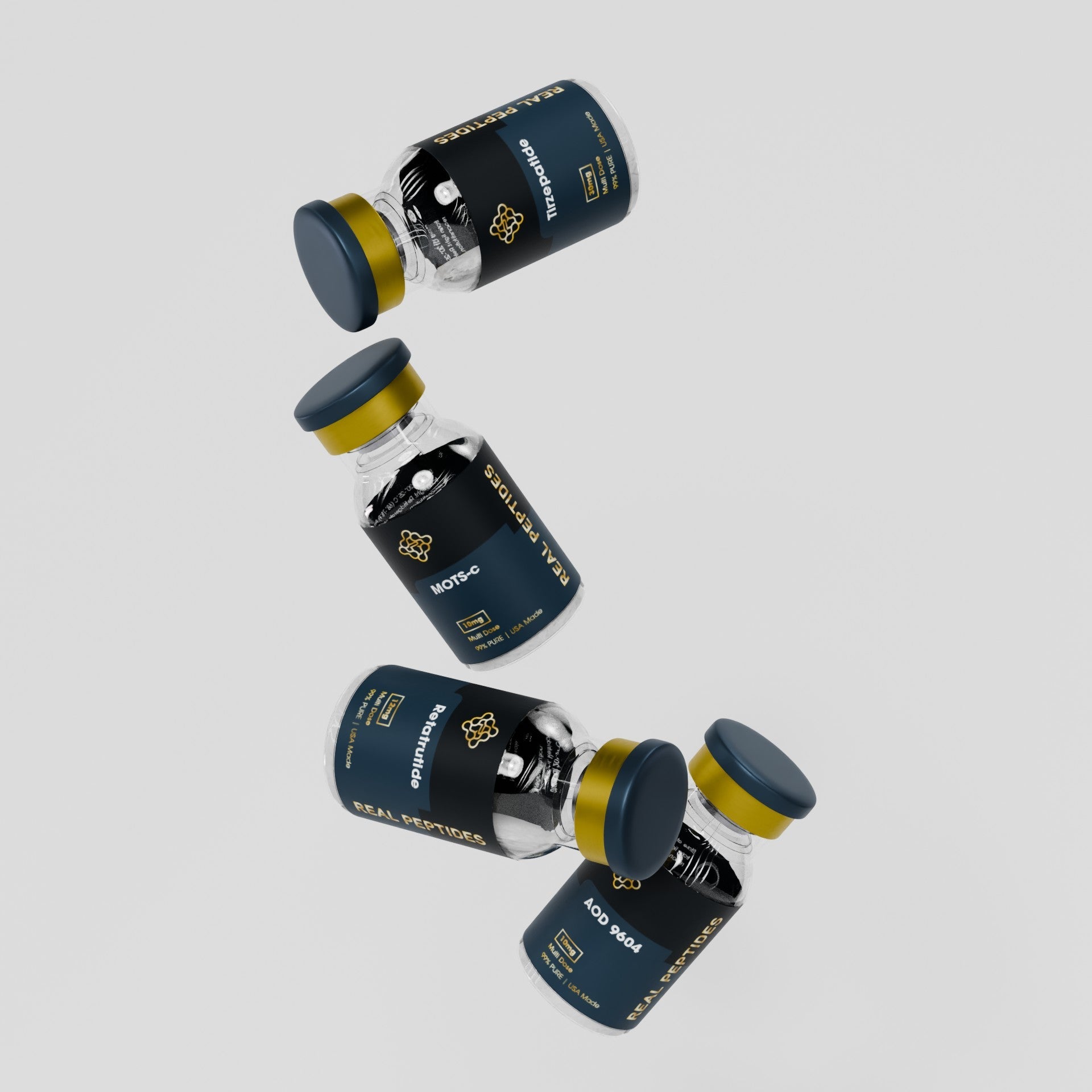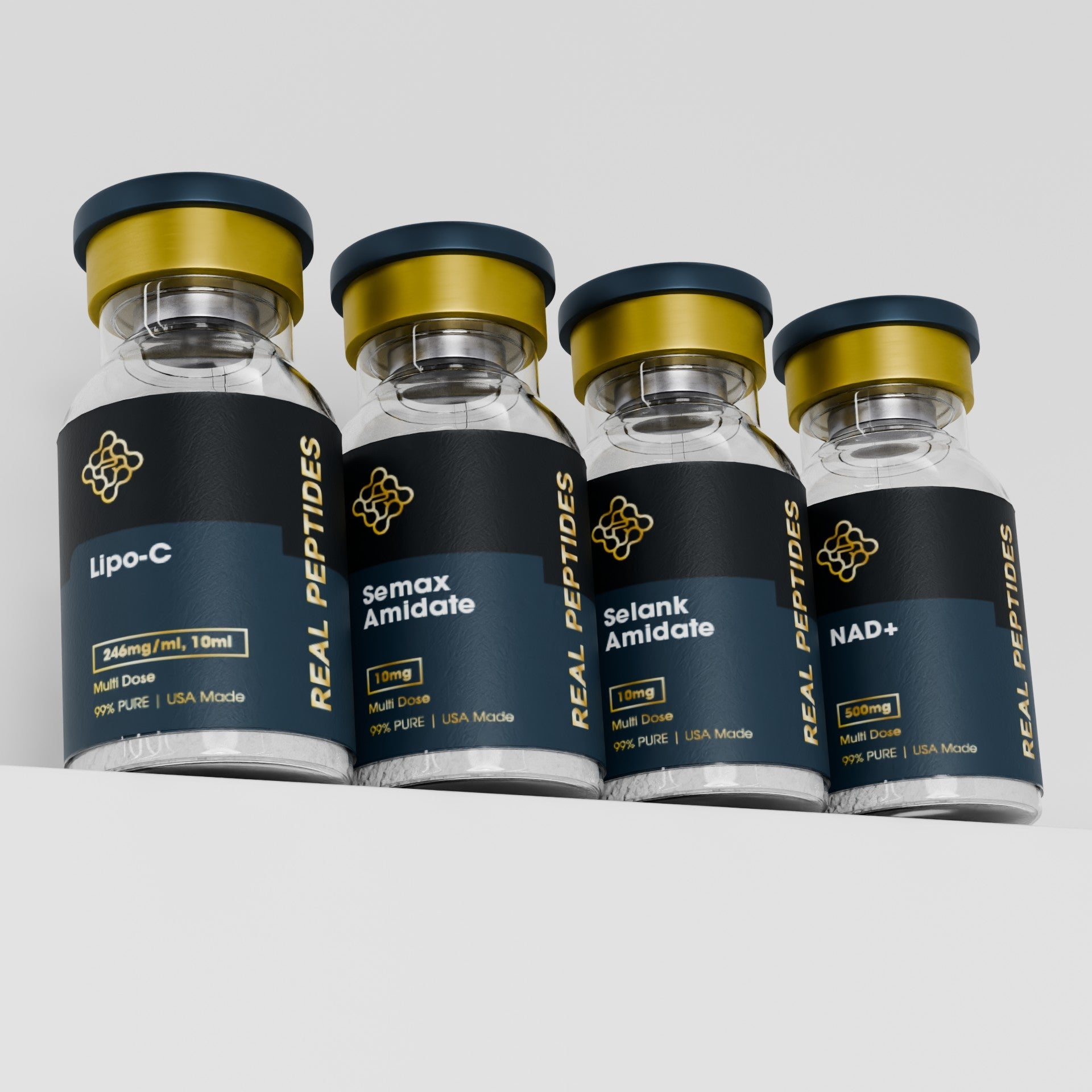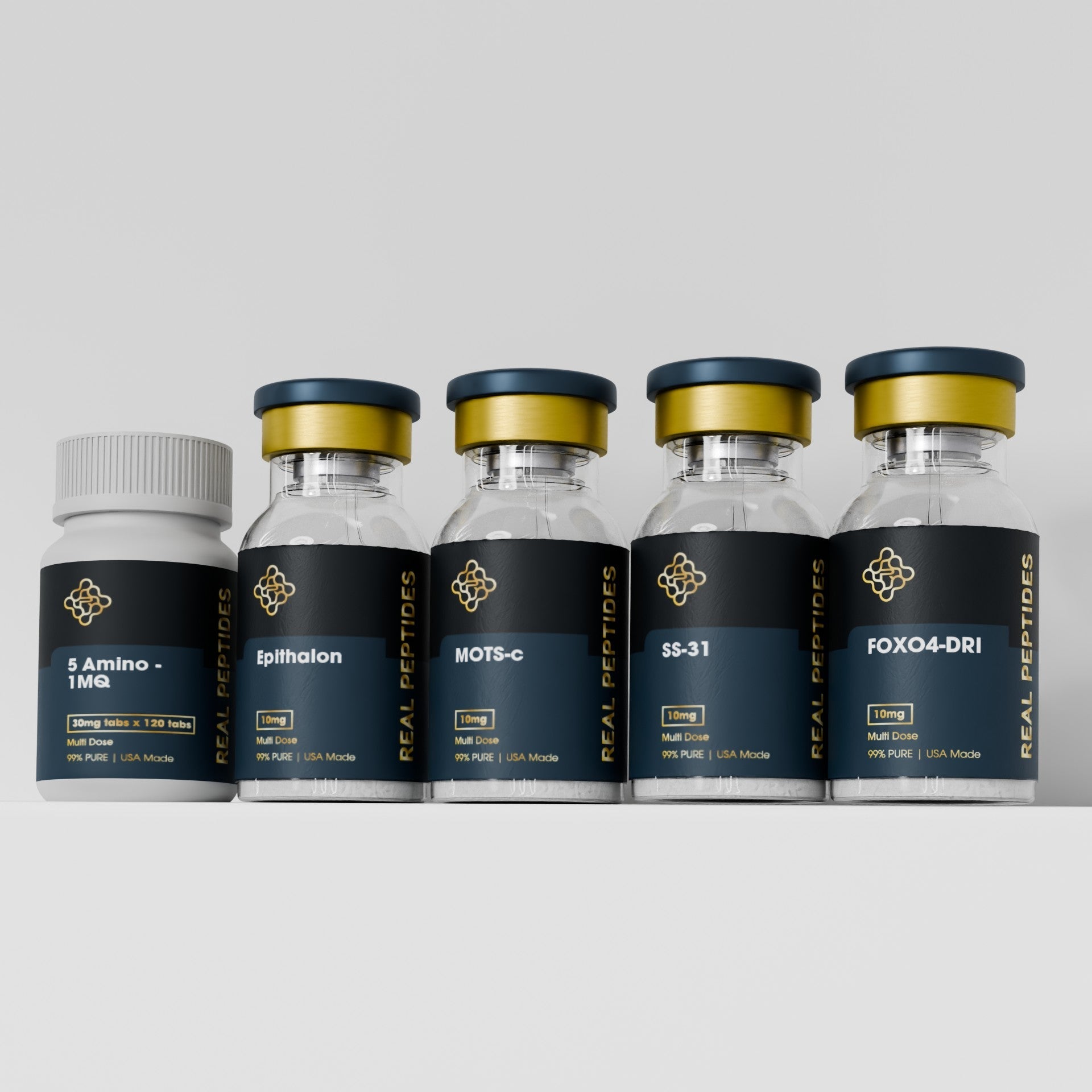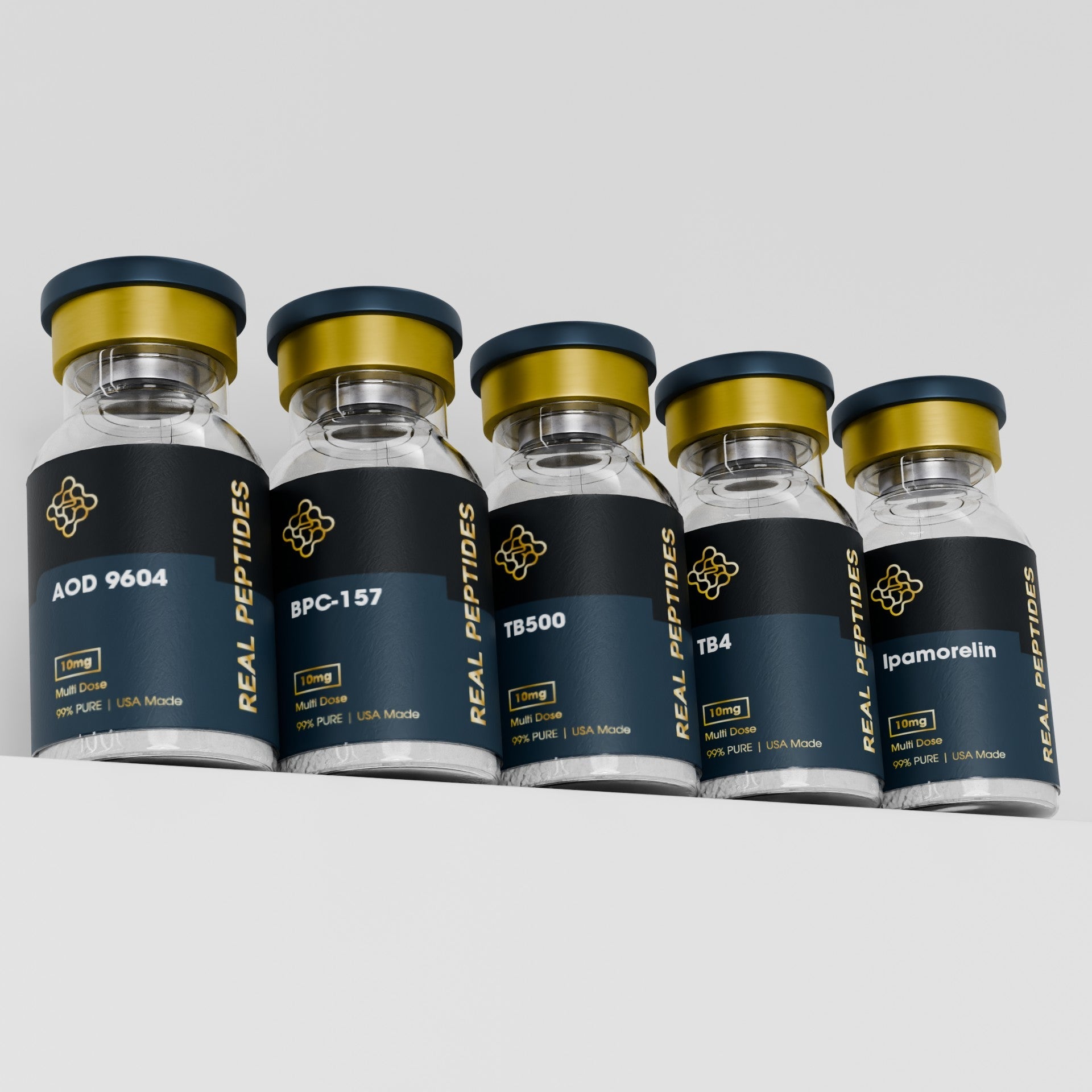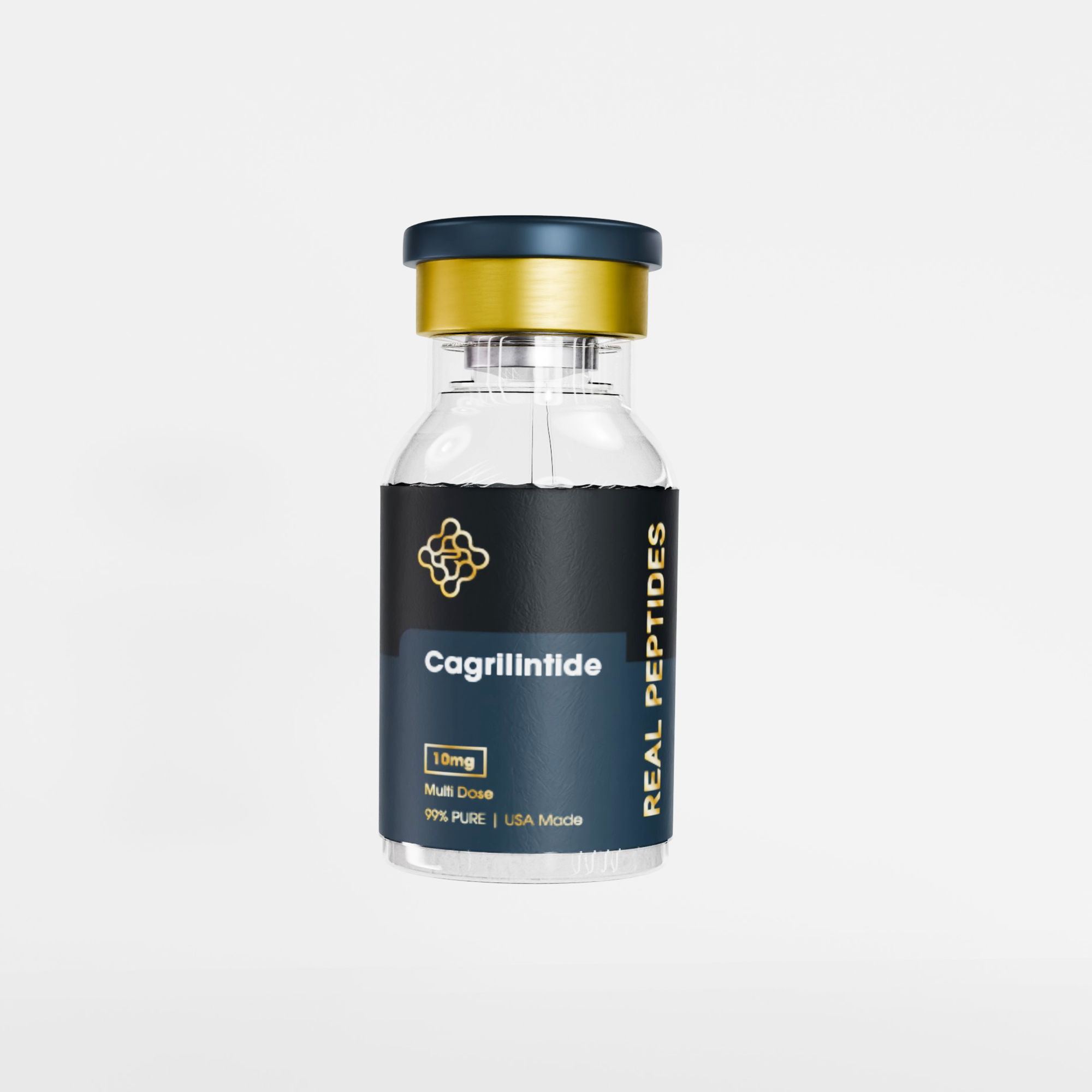
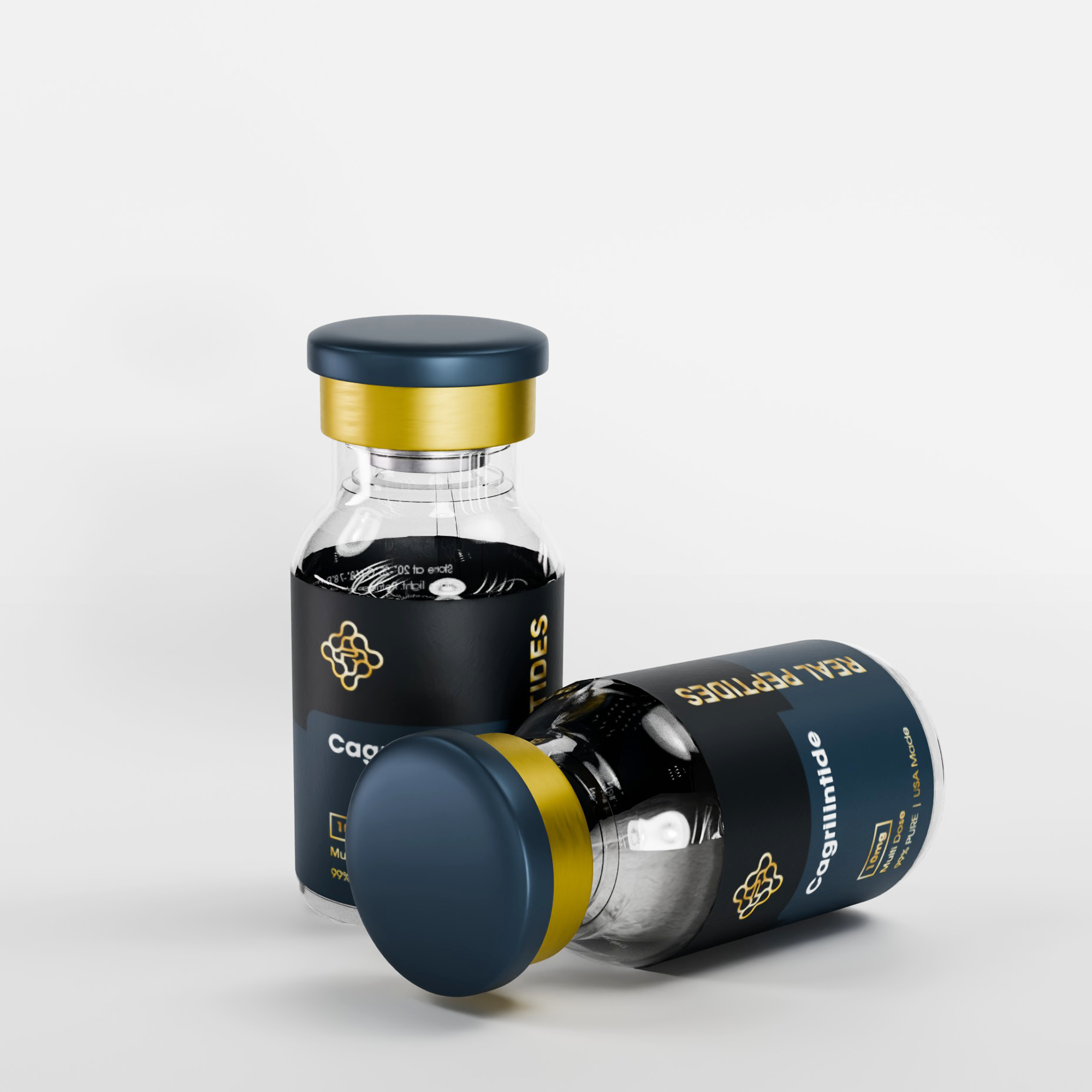
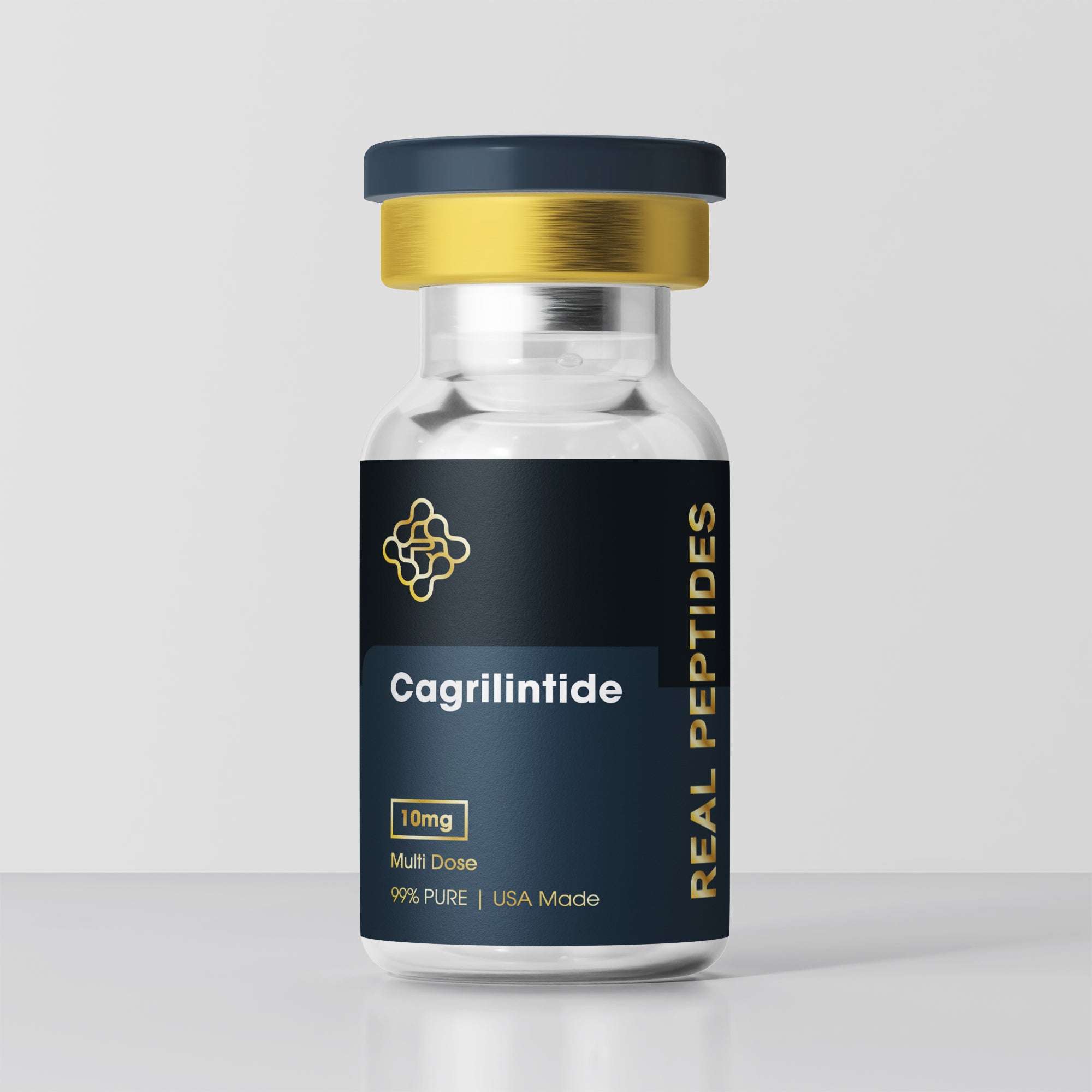
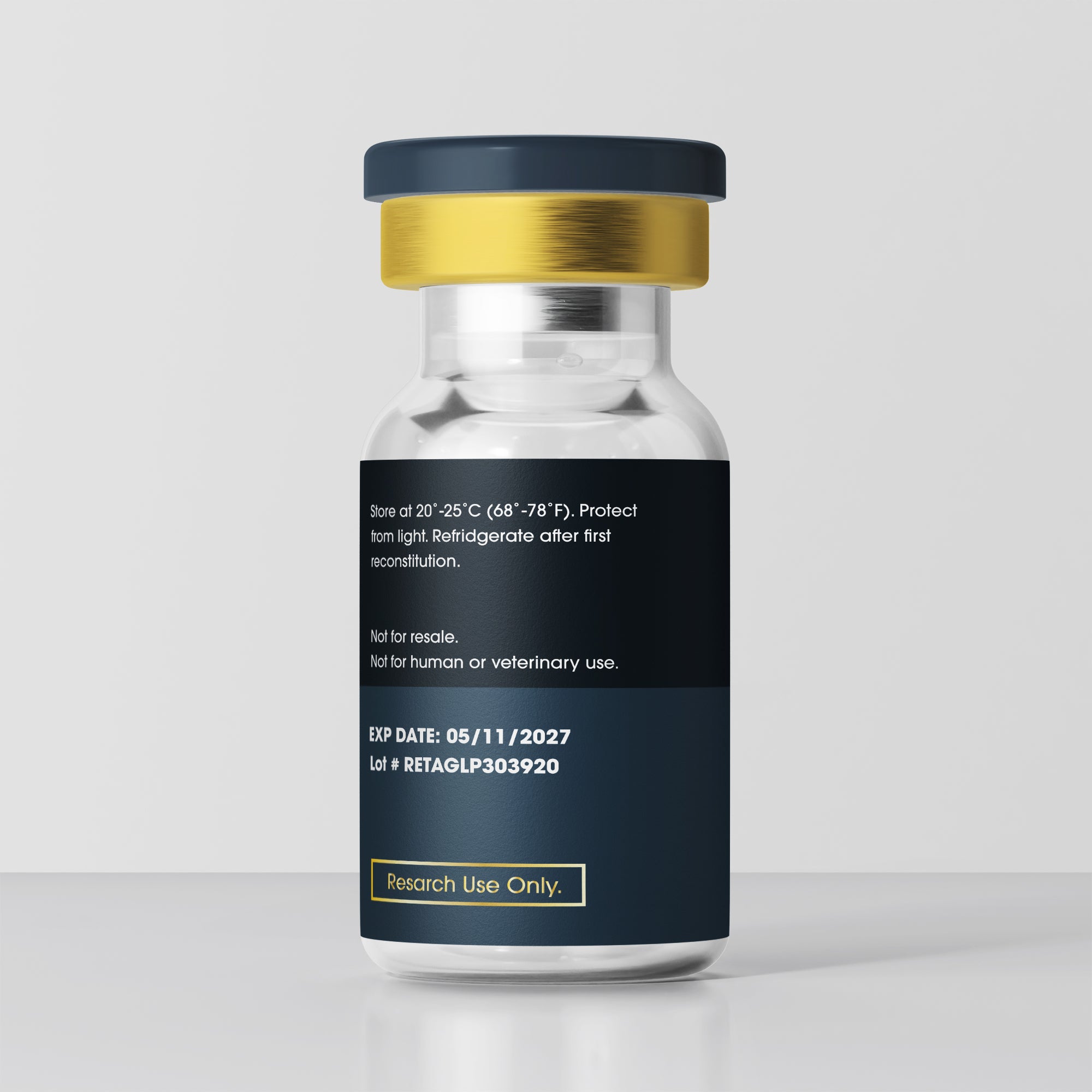
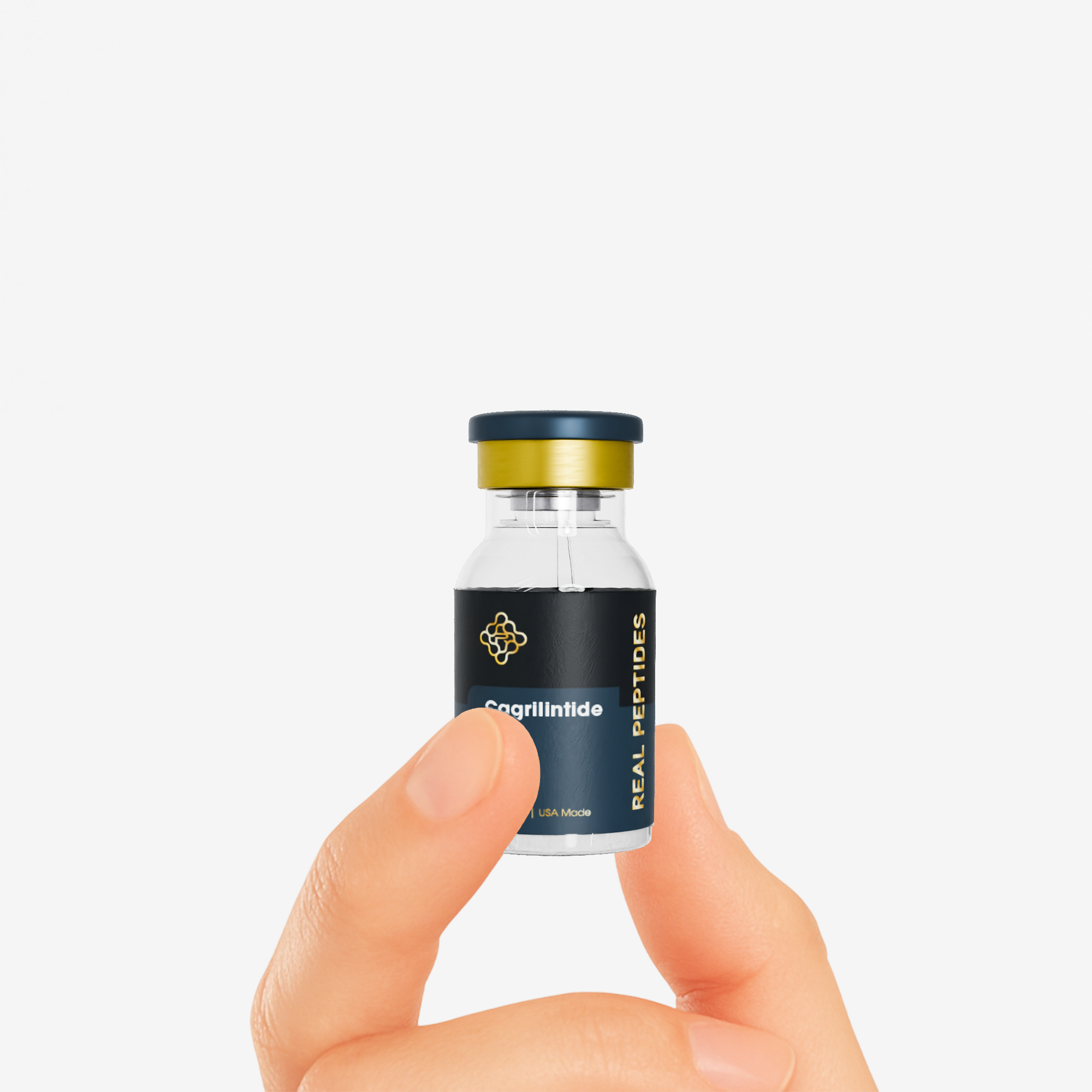
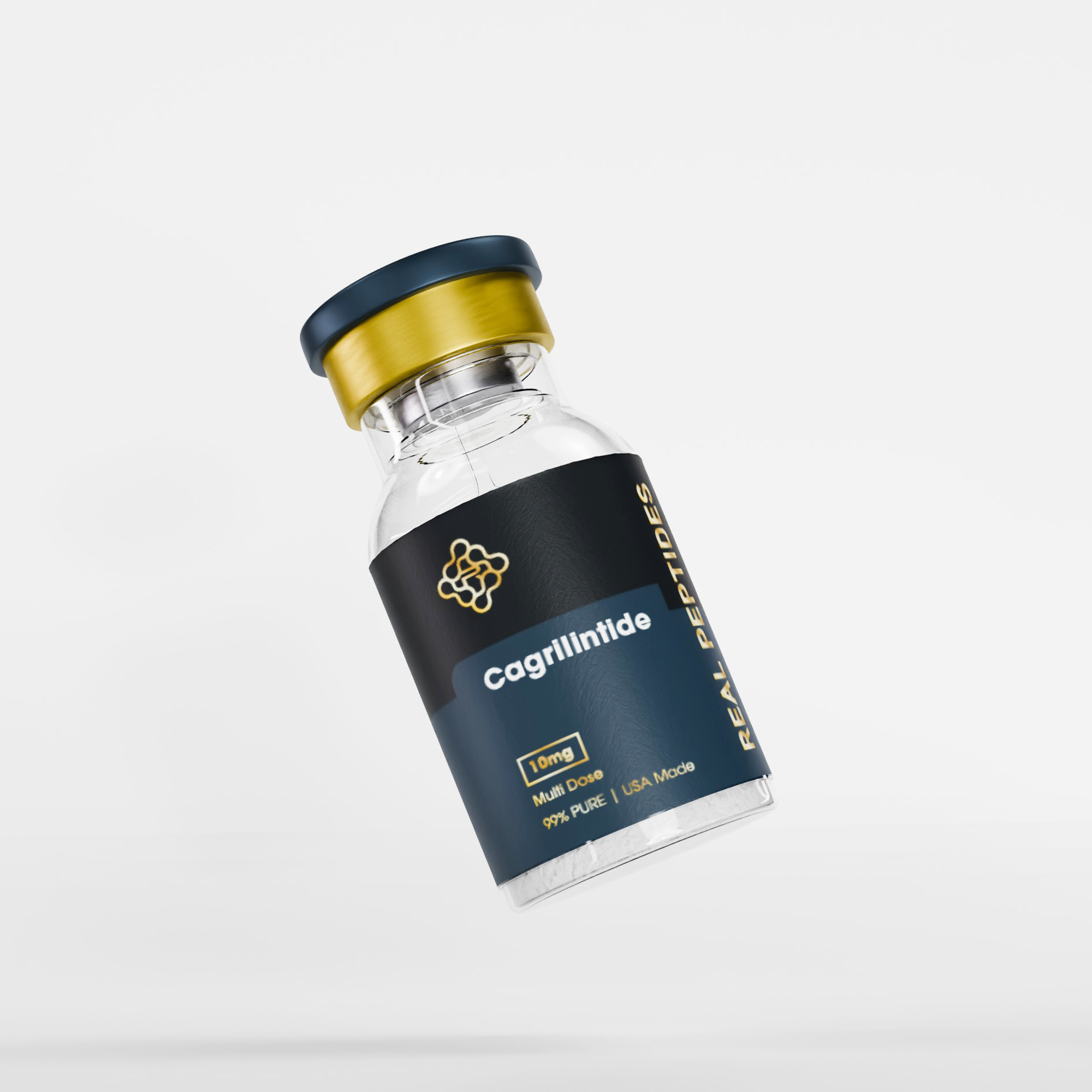
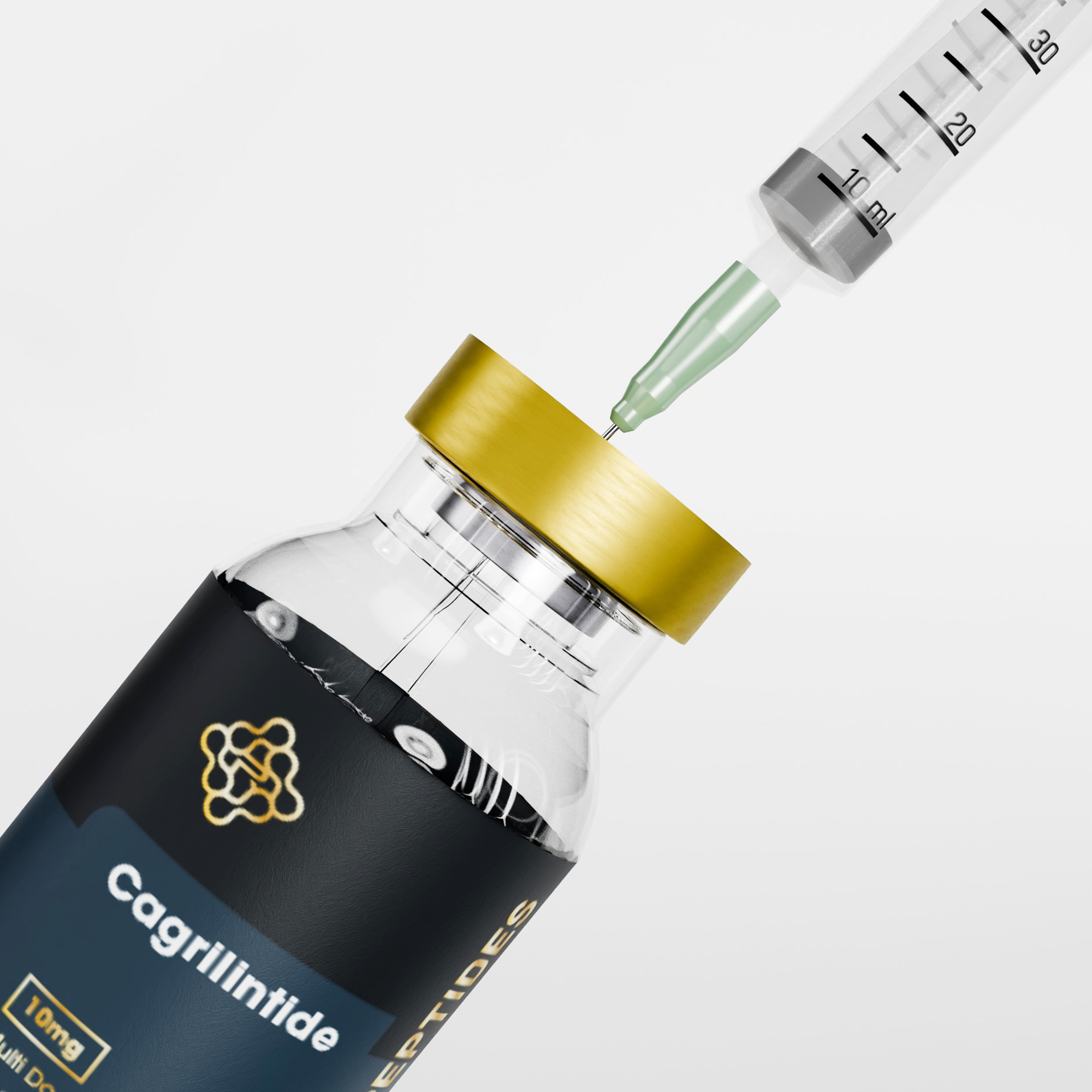
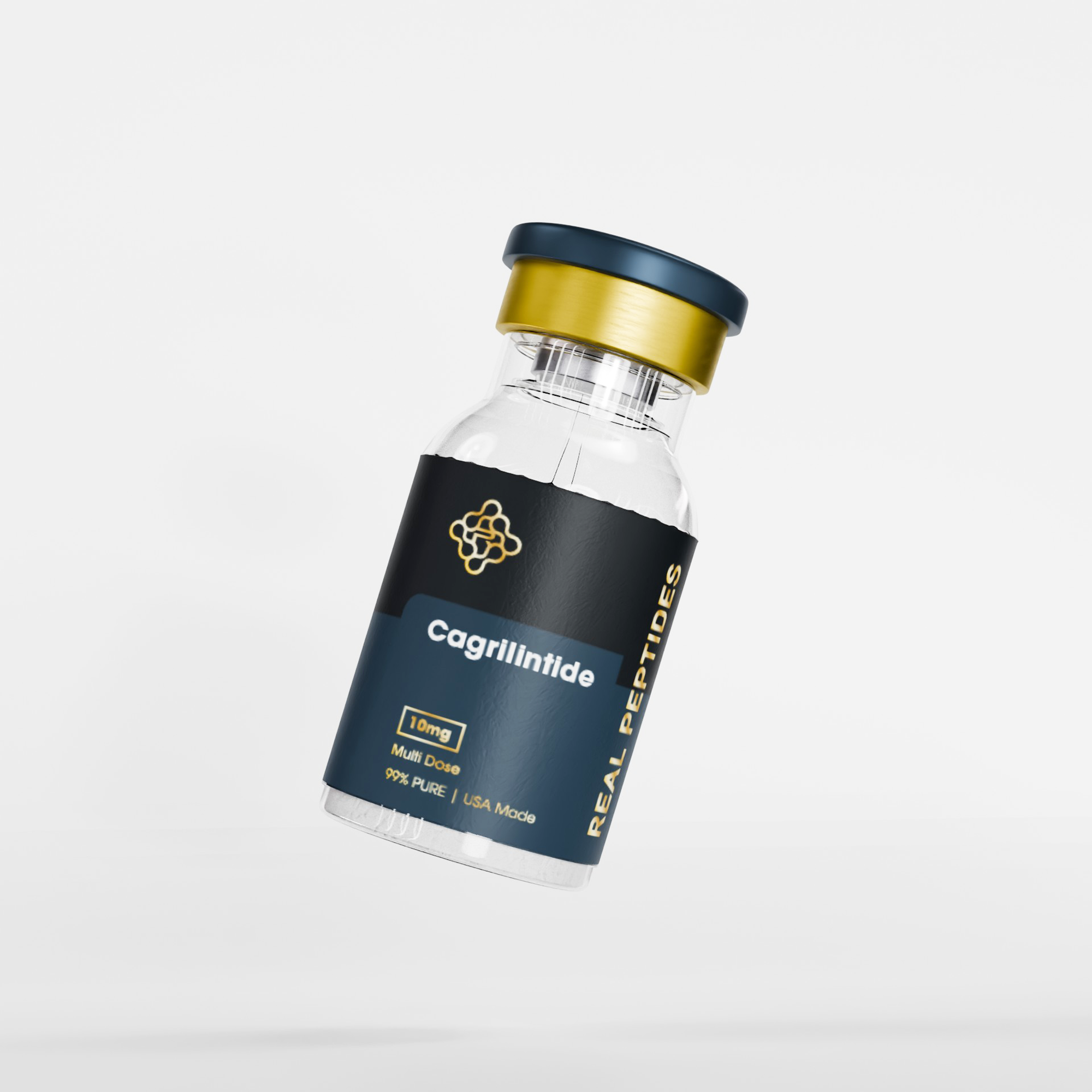
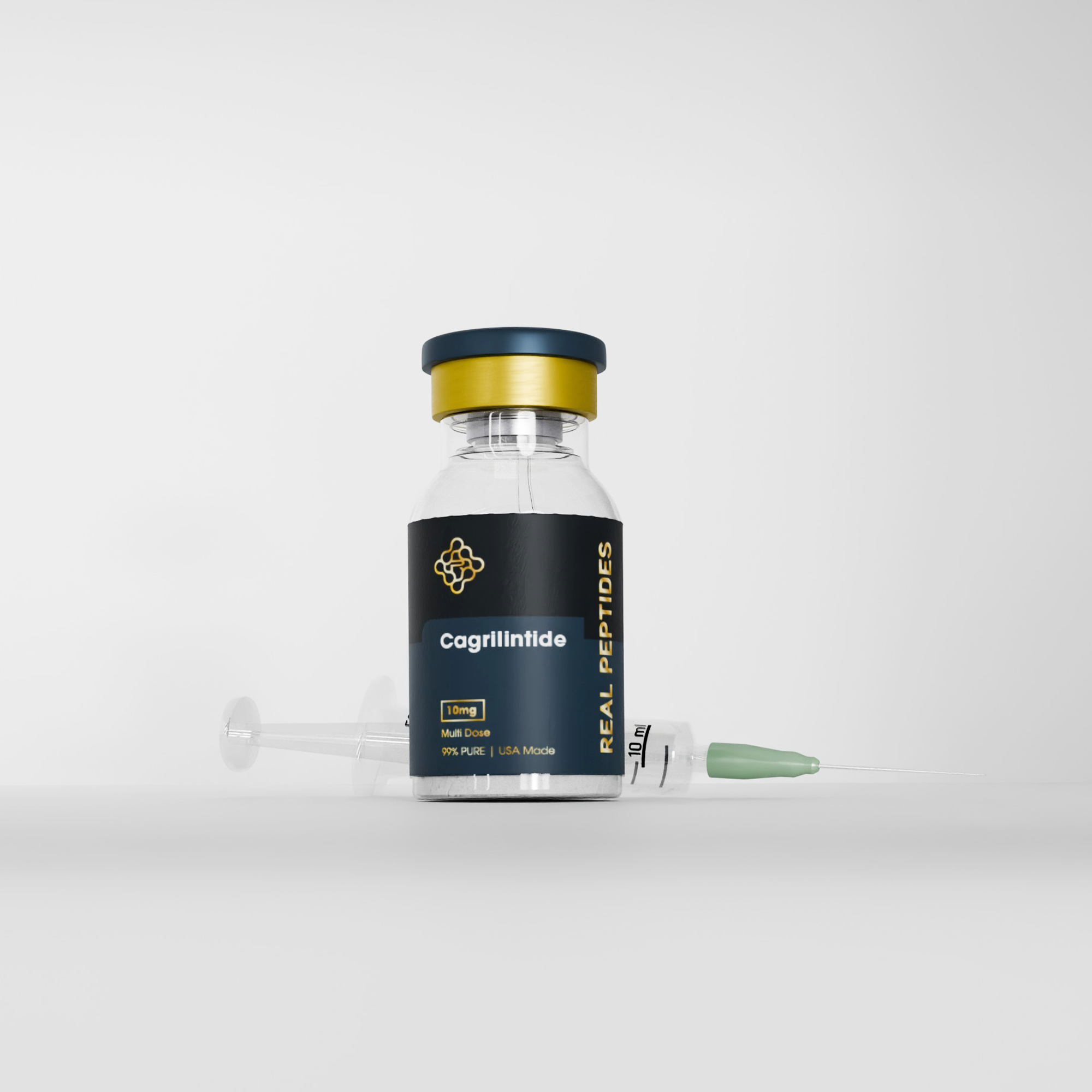
Cagrilintide
Cagrilintide is a powerful, long-acting analogue of the naturally secreted hormone amylin—co-released with insulin. Designed to probe appetite control, glycemic balance, and fat-metabolism in lab models, Cagrilintide slows gastric emptying, modulates satiety pathways, and drives body-fat reduction in rodent and primate studies. When paired with GLP-1 agonists like semaglutide or retatrutide, it delivers amplified metabolic effects. Each 10 mg vial is USA-manufactured, HPLC-tested to ≥99% purity, endotoxin-screened (<0.1 EU/mg), and shipped with a Certificate of Analysis—perfect for high-integrity obesity, diabetes, and NAFLD research.
⚠️ Important Disclaimer
For Research Use Only. Not for human consumption or therapeutic treatment.
Pairs well with
Peptides are not ready to use. Must purchase BAC water for reconstitution.

Cagrilintide
Cagrilintide
KEY HIGHLIGHTS
Appetite-Control Signaling
Activates amylin receptors (AMY1–3) in hypothalamic slice assays, modeling precise satiety pathways.
Gastric-Emptying Delay
Extends stomach transit times by up to 50% in rodent gastric-motility studies, illuminating nutrient-absorption kinetics.
Blood-Sugar Regulation
Improves insulin-sensitivity markers in hepatocyte and adipocyte cultures, providing a tool for glucose-homeostasis research.
Body-Fat Reduction
In primate weight-loss models, Cagrilintide reduces adiposity measures when dosed at 0.1–1 mg/kg, supporting fat-metabolism investigations.
Combination Synergy
Co-administration with GLP-1 agonists shows additive reductions in food intake and enhanced energy-expenditure endpoints in non-human primates.
Lab-Grade Handling & Stability
Reconstitute in SWFI or BAC water; store lyophilized at –20 °C and reconstituted at 2–8 °C for up to 7 days with >98% peptide integrity.


What Is Cagrilintide?
Cagrilintide is a lab-engineered analogue of amylin—a 37-amino-acid peptide co-released with insulin that naturally suppresses appetite and slows digestion. By extending amylin’s half-life, Cagrilintide allows researchers to study sustained satiety signaling, gastric motility delay, and lipid-metabolism regulation in controlled in vitro and in vivo models without directly engaging insulin or glucagon receptors.

Why Choose Cagrilintide?
Researchers select Cagrilintide for its robust, long-acting action on key metabolic pathways. Its stable pharmacokinetics deliver sustained receptor engagement, yielding reproducible appetite-suppression and glycemic-control data across rodent and primate studies. Manufactured under ISO-certified, cGMP-like conditions, each vial undergoes rigorous HPLC purity testing and endotoxin screening—ensuring the consistency needed for obesity, diabetes, and NAFLD research protocols.

What Sets Cagrilintide Apart?
Unlike native amylin, which is rapidly degraded, Cagrilintide’s sequence modifications confer extended activity, making it uniquely suited for chronic metabolic studies. Its selective amylin-receptor agonism decouples satiety and gastric-motility effects from insulin pathways, allowing clear dissection of appetite and lipid-regulation mechanisms. Coupled with proven stability in both lyophilized and reconstituted forms, Cagrilintide stands out as a precision tool for multi-pathway metabolic research.
Research Studies
Co-Formulation of Semaglutide and Cagrilintide in Diabetes & Obesity Models
A six-month preclinical investigation demonstrates that a fixed-ratio combination of semaglutide and cagrilintide produces superior glycemic control and body-weight reduction compared to either agent alone in rodent and non-human primate assays pharmacytimes.com
Mechanistic Insights into Cagrilintide Action
An April 2025 review outlines cagrilintide’s receptor-binding kinetics, signaling pathways (including AMY1–3 activation), and metabolic effects—highlighting novel formulation strategies under study to extend peptide half-life and enhance metabolic-dysfunction protocols.
Dual Amylin + Calcitonin Receptor Agonists vs. Cagrilintide
A rodent obesity/diabetes model compares KBP-based dual amylin–calcitonin receptor agonists to CagriSema (semaglutide + cagrilintide), showing comparable AMY3 activation but suggesting differentiated metabolic and weight-loss profiles across compounds.
Cagrilintide FAQ's
What is Cagrilintide peptide?
A long-acting amylin analog used to study satiety, gastric motility, and metabolic regulation in preclinical models.
How does Cagrilintide control appetite?
It agonizes amylin receptors in the hypothalamus to model natural satiety signaling.
Can Cagrilintide regulate blood sugar?
Yes—cell-culture assays show improved insulin sensitivity and glucose-uptake markers.
What dose range is used in research?
In vivo studies commonly use 0.1–1 mg/kg, depending on species and endpoint.
Does Cagrilintide work with GLP-1 agonists?
Co-administration shows additive effects on food intake reduction and energy expenditure.
How is Cagrilintide reconstituted?
Use Sterile Water for Injection (SWFI) or Bacteriostatic Water (BAC) per lab protocol.
What storage conditions are required?
Store lyophilized at –20 °C; keep reconstituted solutions at 2–8 °C and use within 7 days.
Does Cagrilintide affect insulin or glucagon?
No—it selectively targets amylin receptors without direct insulin or glucagon activation.
Is Cagrilintide approved for clinical use?
No—strictly for research use only, not approved for human or veterinary treatment.
Where is Cagrilintide manufactured?
Synthesized in ISO-certified U.S. labs and validated for ≥99% purity and low endotoxin.

